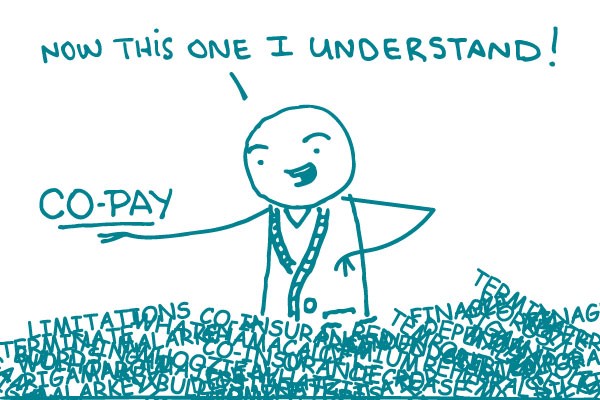
Because of the Affordable Care Act, more people are getting health insurance than ever before. Yay!
On the less fun side of things, these new customers are wading through a pile of complex terms. Words like premium, deductible, co-insurance, and co-pay are just the beginning (don’t get us started on actuarial value). It’s enough to make anyone’s head spin.
As a health writer, you can help keep the chaos at bay by using plain language words and phrases as much as possible. When readers do need to know a term, don’t just use it — teach it.
The teaching approach is what we suggest for “co-pay.” Since this is a term that people are going to see again and again in the health insurance world, explain what it means and give an example:
What is a co-pay?
A co-pay is the amount of money you pay when you get a health care service. For example, if you have a $20 co-pay for doctor visits, you’ll pay $20 each time you go to the doctor.
The question we tend to get from our health insurance friends is, “What if they haven’t met their deductible yet, and what about the out-of-pocket maximum?” Our answer: “co-pay” is a relatively simple term on its own, and it’s best to keep it that way. If you have to, explain the deductible and out-of-pocket max separately. But don’t bog down the explanation of “co-pay” with more detail than your readers need.
Oh, and were you wondering where that mysterious “ment” went? “Co-pay,” not “co-payment,” is the term you’ll hear in everyday conversation. So keep it simple and stick with “co-pay.”
The bottom line: “Co-pay” is a health insurance term people need to know. So teach it — simply.
Browse recent posts